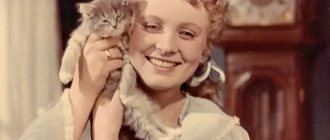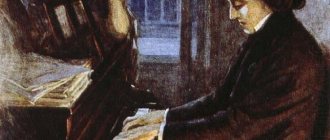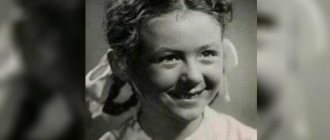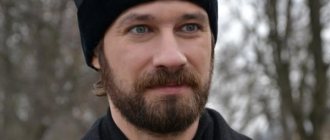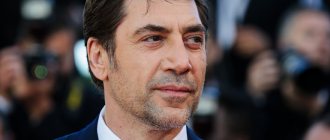Al Pacino's childhood
Alfredo James Pacino was born into the family of insurer Salvatore Pacino and housewife Rose Gerardi. Alfredo's maternal grandparents moved to the States from the Sicilian town of Corleone; the father of the future actor also had Italian roots.
Al Pacino with his parents
Salvatore and Rose got married at a very young age: he was 20, she was barely 17. A year later, a baby was born, but this did not save the hasty marriage - two-year-old Alfredo was forced to survive the separation of his parents and move with his mother to her parents on the outskirts of New York , in the South Bronx.
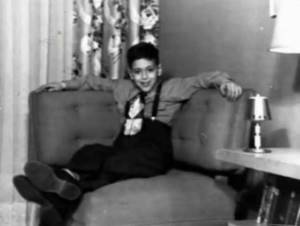
Little Alfredo Pacino
Even today, the typical New Yorker associates this area with rampant poverty, crime and neglect, but in the early 40s the situation was much worse. So, until the age of seven, little Alfredo was forbidden to leave the house unaccompanied by adults, so the boy’s only entertainment was the local cinema, where his mother took him in the evenings. During the day, languishing with boredom, he colorfully recounted the scenes he had seen to his grandmother, who was looking after him - this is how the boy’s interest in cinema flared up.
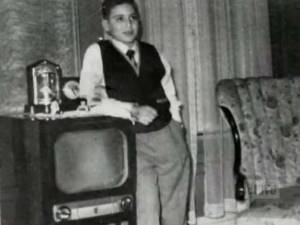
Al Pacino developed a passion for cinema as a child
But as soon as the boy got the opportunity to “go out in public” on his own, he literally “broke off the chain”: teachers at school could not control this behavior, not to mention his academic performance, at the age of 9 the boy tried his first cigarette, and at the age of 13 he began to drink and smoke weed. He was saved from hard drugs by the death of two close friends who died from overdoses.
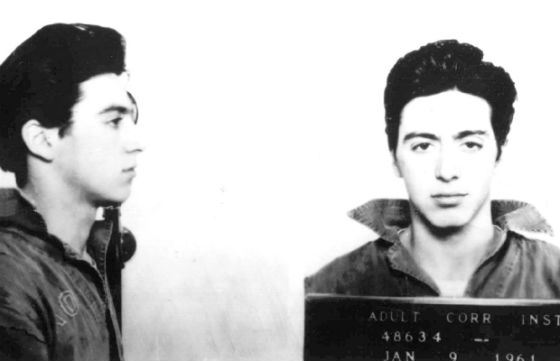
Al Pacino was a "troubled teenager" in his youth
Al Pacino's theatrical career
As a teenager, Alfredo, or, as his first pseudonym said, Sonny Scott, wanted to become a professional baseball player, but later, after watching a production of Chekhov’s The Seagull, this desire was replaced by a dream of an acting career: “The play began... and then ended. It flew by in an instant. It was magic. I remember thinking: “Who do you have to be to write something like this, huh?” I immediately got hold of a collection of Chekhov’s stories.” Soon the young man entered the famous Fiorello LaGuardia School of Performing Arts in New York, for which he received the nickname “Actor” from his comrades.
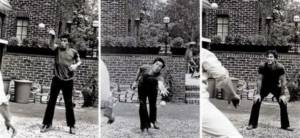
In his youth, Al Pacino dreamed of becoming a professional athlete
Alfredo was of little interest to ordinary school: in his senior year he failed all exams except English and was expelled, which caused a quarrel with his mother. The hot-tempered young man left home, wandered and wandered around with friends, took on any job - a messenger, a cleaner, a waiter, a postman, and all in order to pay for his studies at the acting studio.
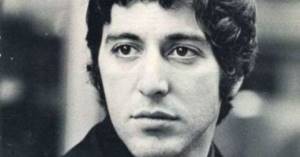
Young Al Pacino had to survive on the streets of New York
In 1960, “The Actor” became part of the New York theatrical underground: together with a friend, he acted out skits in public places, after which he passed a hat around for donations. He later joined Herbert Berghof's studio, where he met teacher Charlie Lighton, who taught the guy acting and subsequently became his best friend.
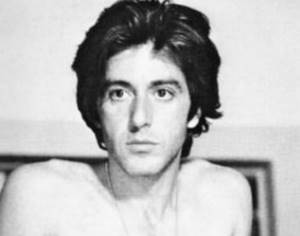
Al Pacino's theatrical career began with free performances
In 1962, 43-year-old Rose died of leukemia, and a year later her grandfather, who replaced Alfredo as a father, passed away. In 1966, after many unsuccessful attempts, Alfredo Pacino auditioned for the Actors Studio in Manhattan. He took a course with Lee Strasberg, who taught students the Stanislavsky system.
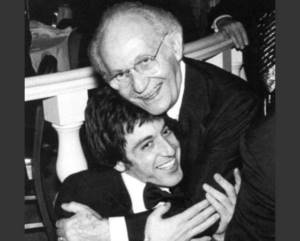
Al Pacino and Lee Strasberg, acting teacher
In 1967, the first roles in commercial theaters followed. At first he performed at the Charles Playhouse in Boston for a more than modest salary - $125 a week. At this time, the actor came up with a sonorous pseudonym for himself, shortening “Alfredo” to the first syllable. At the same time, Al Pacino made his Broadway debut in the play “Does a Tiger Wear a Tie?”, for which he received rave reviews from the audience and a Tony Award (the American equivalent of the Golden Mask).
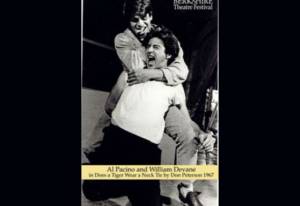
Al Pacino in the play "Does a Tiger Wear a Tie?"
In 1968, the actor already played in New York's Astor Place: his repertoire included the only role - street punk Murph in the production of Indians Want the Bronx, where the actor's close friend John Cazale also played.
Al Pacino's first film roles
Alfredo began to receive his first roles, albeit episodic and practically unpaid, already in the first weeks of training at the Actors Studio. In 1968, he made his debut in the TV series NYPD (episode "Deadly Circle of Violence") with the role of a third-rate character named John James.
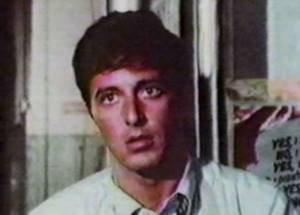
Al Pacino's first film role (NYPD series)
In 1969, Alfredo received his first role in a feature film (“I, Natalie”). The actor's talented performance was noticed by Martin Bregman, one of the best producers of that time, and offered Pacino cooperation. Looking ahead, we note that the partnership turned out to be fruitful: Bregman produced such films with Al Pacino as “Serliko”, “Scarface” and “Dog Day Afternoon”.
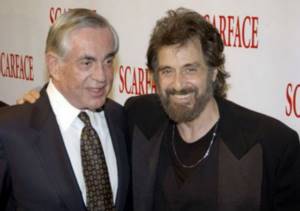
Al Pacino and Martin Bregman's friendship lasted for many years
In 1971, Al Pacino played drug addict Bobby in the film Panic in Needle Park directed by Jerry Schatzberg. The film became the first major work of the young actor.
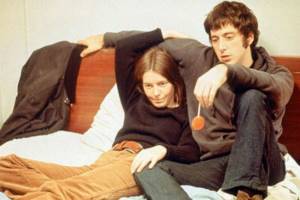
Panic in Needle Park: Al Pacino as drug addict Bobby
Biography of Al Pacino
In the 1960s he played in off-Broadway plays. In 1968, Pacino won an OBIE Award for his role as a crazed alcoholic in Israel Horowitz's Bronx for an Indian, and in 1969 he received a Tony Award for his role as a drug addict in Do Tigers Wear Neckties? on Broadway.
In 1977, Al Pacino received a Tony Award for his stage performance in David Rabe's play The Basic Preparation of Pablo Hummel.
In the 1980s, his theatrical work in Richard III was considered unsuccessful by critics.
He made his film debut in 1969 as Tony in the film Me, Natalie. Al Pacino then played the lead role in Panic in Needle Park (1971), considered the best of the films about drug addiction of the early 1970s.
Pacino became world famous for his starring role as Michael Corleone, the son and heir of the head of a mafia clan, in Francis Coppola's epic gangster film The Godfather (Godfather, 1972). The film brought the actor his first Oscar nomination.
Over the following years, he played many of his best roles, receiving Oscar nominations for Serpico (1973), Godfather (The: Part II, 1974), and Dog Day Afternoon. "(Dog Day Afternoon, 1975).
In the late 1970s and early 1980s, the actor starred in the films Borrowed Life (Bobby Deerfield, 1977), And Justice for All, 1979, and Author! The author! (Author! Author!, 1982), “Scarface” (Scarface, 1983).
After the failure of the 1985 film "Revolution", Pacino plunged into depression and left films for several years, occasionally performing in the theater.
He returned to cinema in 1989 in the film Sea of Love (1989). In 1990, the film “Dick Tracy” was released, which brought the actor another Oscar nomination. In the same year, the premiere of the third part of “The Godfather” (Godfather, The: Part III) took place, where Pacino brought the image of Michael Corleone he created to its logical conclusion.
In the 1990s, Al Pacino starred a lot and successfully. The actor's leading roles in the films Frankie and Johnny (1991) and The Americans (Glengarry Glen Ross, 1992) received critical acclaim, the latter of which earned him an Oscar nomination. Al Pacino was awarded this prestigious award in 1993 for his performance in the film Scent of a Woman (1992).
In subsequent years, several significant films with Pacino's participation were released: Carlito's Way (1993), Heat (1995), City Hall (City Hall, 1996), Devil's Advocate, 1997).
The actor's filmography includes about 50 films. His latest works include You Don't Know Jack (2010), Son of No One (2011), Stand Up Guys (2012), and Manglehorn. (Manglehorn, 2014), “Humiliation” (Humbling, 2014), “Second Chance” (Danny Collins, 2015).
As a director, Al Pacino directed the films Local Stigmatic (1990), Looking for Richard (1996) and Chinese Coffee (2000).
In 2011, he screened his semi-documentary Wilde Salome at the Venice Film Festival out of competition.
Pacino is the producer of his own films “Disgrace of the Area” and “Finding Richard,” as well as the drama “Humiliation.”
The actor's work has been awarded numerous awards. He is the winner of such prestigious film awards as Oscar (1993), Golden Globe (1974, 1993, 2001, 2004, 2011), Emmy (2004, 2010), BAFTA (1976), Venice Film Festival (1994). , 2011) and others.
In 2007, Pacino received the American Film Institute's (AFI) highest award for achievement in filmmaking.
Al Pacino has never been officially married, but he has three children. In 1989, acting teacher Jen Tarrant gave birth to his daughter, Julia Maria Pacino. In January 2001, Pacino and his girlfriend, actress Beverly D'Angelo, gave birth to twins - son Anton and daughter Olivia.
The material was prepared based on information from RIA Novosti and open sources
"Godfather"
In 1971, director Francis Ford Coppola, who was looking for an actor to play the role of Michael Corleone in The Godfather, which, according to Paramount executives, promised to be nothing more than an ordinary gangster drama, was impressed by Al Pacino's performance in Panic in Needle Park" and invited him to audition. Al Pacino auditions for the role of Michael Corleone It must be said that the role of the son of the mafia godfather seemed to have been created for Al Pacino with his Sicilian roots. The actor’s characteristic Italian appearance and hot temperament so impressed Coppola that he decisively rejected other contenders for the role, including Robert De Niro, Dustin Hoffman and Robert Redford, which caused consternation among Paramount bosses.
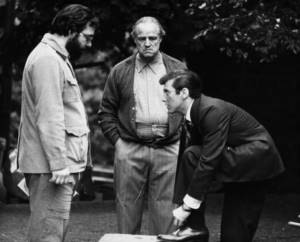
Al Pacino on the set of "The Godfather"
However, the success exceeded all expectations: the drama of the Vito Corleone family, performed by the great Marlon Brando, won the popularity of millions of viewers around the world. “The Godfather” was the first film in which the mafia was shown from the inside out - not just as a criminal group that concentrated in the hands of all the significant “strings”: politicians, entrepreneurs, social figures, but as a family living according to the principles of honor, albeit a peculiar one . In the international IMDB film rating, “The Godfather” is listed in second place, second only to “The Shawshank Redemption.”
Michael Corleone assigned Al Pacino the image of a brutal gangster who does not forgive mistakes: “There are situations when the most extreme measures are justified.”
"Godfather". The final scene The continuation of “The Godfather” was only a matter of time, and very soon the studio management gave Copolla the go-ahead to film the second part. The production of the film began in 1974, and during the break Al Pacino managed to appear in the film “Scarecrow” as the loser tramp Lionel, as well as in the crime drama “Serpico”, where he played a policeman torn by a dilemma: to remain an honest representative of the law and endure ridicule colleagues or step over your own principles and also become a corrupt police officer. Both films were successful and proved that Al Pacino had no intention of remaining “Michael Corleone” until the end of his acting career.
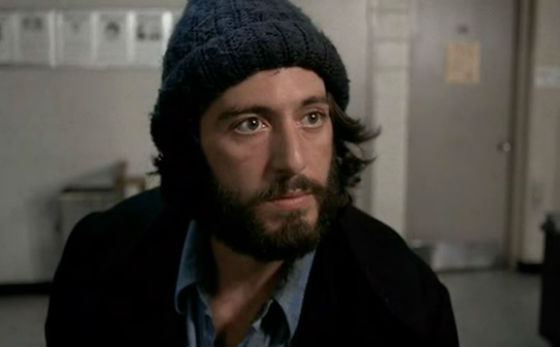
"Serpico": Al Pacino plays an honest cop
The second "Godfather" was a worthy continuation of the first part. The picture consisted of two storylines - the background of the Corleone mafia family and the events that followed the death of Don Vito. In this film, Al Pacino worked with Robert De Niro (young Vito Corleone) for the first time.
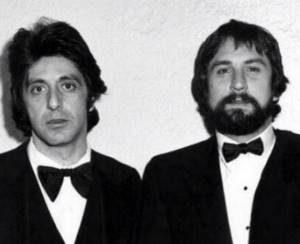
Young Al Pacino and Robert De Niro, 1974
Godfather
Mario Puzo's The Godfather
- USA, Italy, 1972.
- Drama, crime.
- Duration: 175 minutes.
- IMDb: 9.2.
The famous crime saga tells about the Corleone mafia family. Don Vito gives his daughter in marriage. At the same time, his beloved son Michael returns from the war. The latter does not want to get involved in the cruel family business, but times change, and soon an assassination attempt is made on Vito Corleone.
Francis Ford Coppola noticed a young Al Pacino in Panic in Needle Park and suggested he play Michael Corleone. The producers considered him not tall enough and experienced enough for this image. But the director insisted on his own. And for the role of Michael, Al Pacino received his first Oscar nomination. He was included in the Best Supporting Actor category, although he played the lead role in the film. Because of this, Al Pacino did not go to the ceremony. Marlon Brando, who won the Best Actor nomination, also boycotted the award.
This role became decisive in the fate of the actor. He stunningly portrayed the changes in the character of the hero from a noble war veteran to the new leader of a crime family. In the subsequent films of the trilogy, he returned to the image of Michael, showing the development of the character and his retirement.
Watch on iTunes → Watch on Google Play →
Al Pacino's further career
In 1975, Dog Day Afternoon, a crime drama about bank robber John "Sunny" Wojtowitz, was released. Although Sunny also belonged to the criminal world, he was radically different from the domineering Michael: the character’s character was soft, timid and indecisive, but this did not prevent him from being remembered by the audience as one of Al Pacino’s most striking roles.
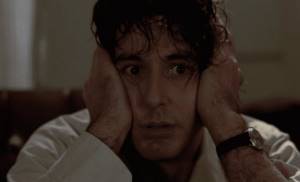
Dog Day Afternoon: Al Pacino as Unlucky Criminal Sunny
Two years later, Al Pacino got the role of race car driver Bobby Deerfield in the film Borrowed Life. The film was received coolly, in contrast to the next work with Al Pacino - the drama Justice for All, where he appeared in the controversial image of an honest lawyer. The film earned him an Oscar nomination for Best Actor, but the award ultimately went to Dustin Hoffman for his role in Kramer vs. Kramer. By the way, initially Al Pacino was supposed to play alongside Meryl Streep in The Kramers, but he refused.
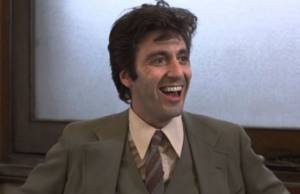
In 1979, Al Pacino played an honest lawyer
The 80s for Al Pacino began with a downturn in his career: participation in the project “The Wanted” brought upon him the wrath of the gay community, and the next film, the cute family comedy “Author! Author!”, was subjected to severe criticism upon release.
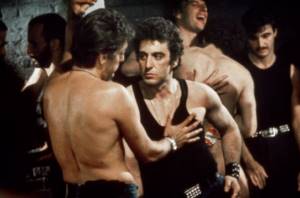
“The Wanted”: Al Pacino’s hero pretended to be homosexual
In 1983, director Brian De Palma invited Al Pacino to play the lead role in the drama Scarface. The film, which told the story of Cuban emigrant Tony Montana, who went from being a criminal "six" to the owner of a cocaine empire, collected good box office and, although after the premiere it was criticized for the topical nature of the topic raised and a large amount of cruelty, over the years it acquired cult status. Al Pacino's partner was Michelle Pffiffer, the sex symbol of the 80s. An excerpt from the film “Scarface” with Al Pacino The next film “Revolution” with the participation of Al Pacino and Donald Sutherland was coldly received by the public, so the film did not justify itself from a commercial point of view. The producers blamed Al Pacino for the failure, and the offended actor left the cinema for 4 years, returning to the theater stage.
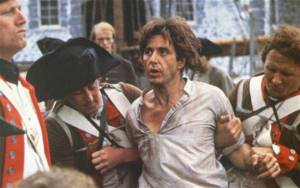
Al Pacino in the movie "Revolution"
The actor appeared on the big screen again only in 1989 in the crime melodrama Sea of Love. A year later, he returned to the image of a gangster in the film “Dick Tracy” about the adventures of a brave detective. The role brought Al Pacino a second Oscar nomination for Best Supporting Actor, but the statuette went to Joe Pesci for his participation in the film Goodfellas.
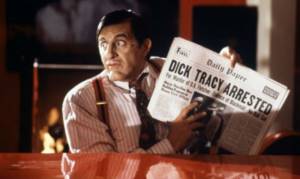
"Dick Tracy": Al Pacino as the villain Big Boy Caprice
The same year, Al Pacino appeared as an aged Michael Corleone in the third part of The Godfather. In the story, his controversial character tried to legalize his business and solve the problems of his children, played by Frank D'Ambrossio and Sofia Coppola, the daughter of the legendary director.
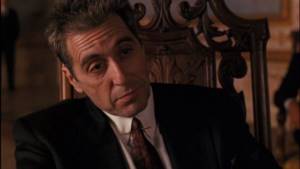
"The Godfather III": Michael Corleone 20 years later
After the finale of the gangster saga, Al Pacino filmed the drama “The Local Stigmatist” with his own money, where he also played the main role. However, then he was embarrassed to give the film a go, and only in 2007 Al Pacino’s first directorial work was released on disc along with other, later creations (“Finding Richard” and “Chinese Coffee”).
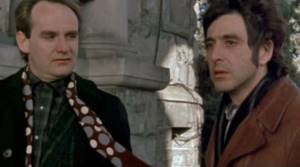
The Local Stigmatist, Al Pacino's directorial debut
In 1991, he reunited with Michelle Pffiffer in the film Frankie and Johnny. This was followed by the role of genius salesman Ricky Rom in the film Glengarry Glenn Ross (also known as The Americans), which brought Al Pacino a third Oscar nomination.
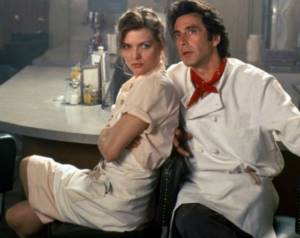
Al Pacino and Michelle Pffiffer
In 1993, the long-awaited Academy Award was awarded to Al Pacino for the film “Scent of a Woman” in the category “Best Actor”. The heartfelt drama about the relationship between young student Charlie Simms (Chris O'Donnell) and Frank Slater, a cynical retired colonel completely blind and dreaming of committing suicide, had the effect of a bomb exploding. Al Pacino, tango from the film “Scent of a Woman” In the same year, the actor returned to the image of a drug dealer in the film “Carlito’s Way”, the plot of which seemed to represent an alternative ending to the story of Tony Montana. The main character, a major drug dealer Carlito Brigane, was released from prison and longed to leave the past behind, starting a new, honest life with his beloved. About the film “Carlito’s Way” In 1995, the premiere of the crime drama “Heat” took place, where viewers witnessed the conflict between the characters of Al Pacino and Robert De Niro, and also appreciated the acting skills of Val Kilmer, Tom Sizemore and Danny Trejo.
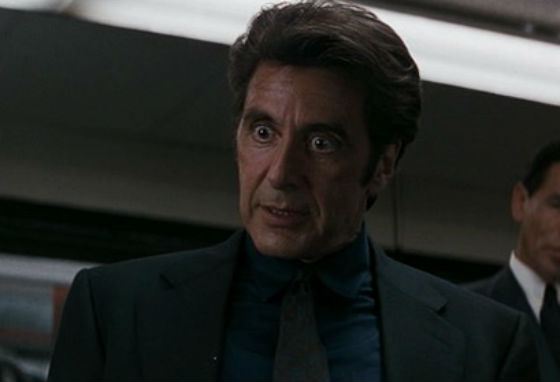
Still from the film "Heat", 1995
The audience also remembered the tandem of Al Pacino and Johnny Depp in the film “Donnie Brasco” - young Depp played an undercover FBI agent, and Pacino appeared in the image of an elderly gangster in need of a partner.
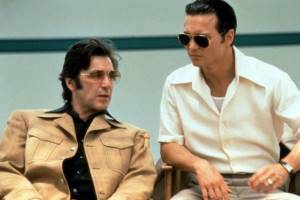
Al Pacino and Johnny Depp starred together in Donnie Brasco
In 1997, one of the best, according to many critics, films by Al Pacino, “The Devil's Advocate,” was released. In the story, an unusually successful young lawyer (Keanu Reeves) received an excellent offer from a large legal corporation. Together with his wife Mary Anne (Charlize Theron), he moves to a luxury apartment in New York and meets the head of the company, the impressive John Milton, whose role earned Al Pacino the title of “Best Villain” according to MTV. “Al Pacino played the Devil with pleasure bordering on glee,” critics wrote about the film. “The Devil’s Advocate”: a dialogue between Al Pacino and Keanu Reeves Two years later, the thriller “The Insider” premiered. This time, Al Pacino went far beyond his usual crime films and played TV show producer Lowell Bergman, who helps Russell Crowe's character, Dr. Wigand, reveal the secrets of tobacco corporations.
In 2002, the actor appeared on the set of the thriller Insomnia by Christopher Nolan in the role of detective Will Dormer. In the same year, Al Pacino performed one of his most beloved characters in the science-fiction film “Simone,” which, however, could not boast of a phenomenal number of tickets sold. Here he played a director who was given artificial intelligence to masterfully imitate any actor.
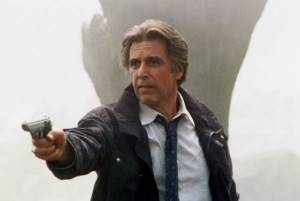
Al Pacino in the movie "Insomnia"
This was followed by roles in the low-budget films “The Recruit” with Colin Farrell, “Gigli” with Ben Affleck and Jennifer Lopez, The Merchant of Venice with Jeremy Irons, as well as in the TV series “Angels in America.”
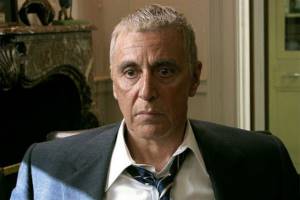
“Angels in America”: the first series starring Al Pacino
2007 was a year for Al Pacino under the auspices of Steven Soderbergh’s “Ocean’s Thirteen,” where the actor played the role of “bad guy” Willie Bank, a casino owner who crossed the path of George Clooney and his loyal team.
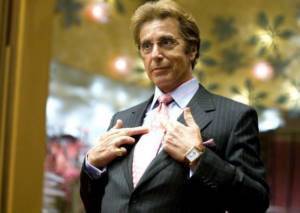
In 2007, Al Pacino crossed Danny Ocean's path
In 2010, Al Pacino starred in the biographical film You Don't Know Jack, playing Dr. Jack Kevorkian, who defended the human right to euthanasia. The role added to the actor’s collection of awards with Emmy and Golden Globe awards. Kevorkian, who was present at the premiere, highly praised Al Pacino's performance.
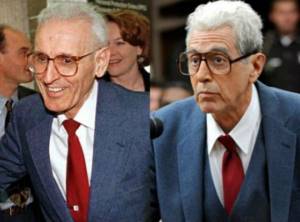
The real Jack Kevorkian and Al Pacino in his image
In 2011, Al Pacino performed in an unusual comedy genre with a cameo in the film “Twins So Different” with Adam Sandler. The experience was unsuccessful - the actor received the Golden Raspberry anti-award in the category “Worst Supporting Actor”.
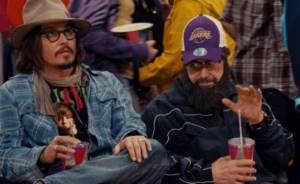
Cameo by Al Pacino and Johnny Depp (“Such Different Twins”)
Alfredo James Pacino was born on April 25, 1940 in Manhattan, into an Italian-American family. His parents divorced when the boy was only two years old and little Al moved with his mother to a poor, crime-ridden area of the South Bronx to live with his grandparents. Since childhood, Al smoked, drank, got into fights with local punks, skipped school and wanted to become either a baseball player or an actor. By the age of 16, Pacino dropped out of school and worked part-time as a waiter or as a courier. Alfredo saved up for his education and entered the famous School of Performing Arts in New York. The mother was never able to see her son's triumph; she died in 1962. At this time, Pacino was just making his way to the acting Olympus, performed on the theater stage in New York, and then joined Herbert Berghof's studio. Pacino later managed to enroll in the prestigious Lee Strasberg acting school.
Al Pacino began his career as a theater actor and became very successful on stage, receiving many prestigious awards. Thanks to his successful stage performances, Pacino was noticed by film producers. In 1969, 29-year-old Pacino received his first notable role - in the film “I, Natalie.” In 1971, 31-year-old Pacino played the main film role in Jerry Schatzberg's drama Panic in Needle Park. He played the role of a drug addict who is trying to get out of the dope with his beloved. Seeing the eccentric Italian-American in this drama, Francis Ford Coppola was so fascinated that he invited an unknown actor to play the role of Michael Corleone in his film The Godfather (1972). The film has become a classic of world cinema. And Pacino’s performance was awarded an Oscar nomination, although Al ignored the ceremony because he believed that he should have been nominated instead of Marlon Brando as best actor, not supporting actor. Despite the scandal, it was an undoubted triumph. “The success of the film crushed me. But now I look at it as a special phenomenon that happened to me,” recalls Pacino. A year later, in 1973, Al brilliantly played in the drama “Scarecrow” and in the film about a policeman with a keen sense of justice “Serpico”. 1974 was marked by the release of the second part about the Corleone clan, “The Godfather II.” A year later, the actor played in the drama Dog Day Afternoon (1975). He played the role of a homosexual who robs a bank with his lover. After working in the films “Justice for All” (1979) and “Author! The author! (1982) Al Pacino gets another starring role - gangster Tony Montana in Brian De Palma's Scarface (1983). The film became a cult film, and the actor was nominated for a Golden Globe. Al was always critical of his work, so after working in subsequent, not so successful films (“Revolution”, “Sea of Love”), he decided to suspend his film career and devote himself to the theater. But in 1990, he played Michael Corleone for the last time in The Godfather Part III. And already in 1992, Pacino received an Oscar for Best Actor, playing a blind retired colonel in the film Scent of a Woman. Afterwards, the actor starred in such popular films as “The Devil’s Advocate” (1997), “Donnie Brasco” (1997), “Simone” (2002), “Ocean’s Thirteen” (2007), “Right to Kill” (2008), "You Don't Know Jack" (2010). Pacino is also successful as a film director. On September 5, 2011, the 71-year-old actor was awarded a special prize “For his contribution to cinema” at the Venice Film Festival. He has never married, but has three children from two women.
Al Pacino's personal life
Al Pacino never liked to advertise his personal life, although it was very, very eventful. At the dawn of his film career, he met another aspiring actress, Jill Clayburgh.
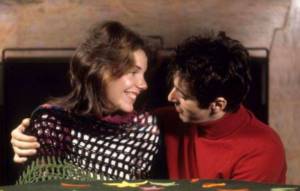
Al Pacino's first girlfriend Jill Clayburgh
Their romantic relationship lasted five years, but in 1971, on the set of the first part of The Godfather, Al Pacino began an affair with his colleague on the set Diane Keaton, who played Michael Corleone's girlfriend. In 1974, after the premiere of the second part, their romantic relationship came to an end.
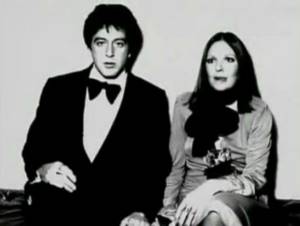
Al Pacino and Diane Keaton
In 1977, Al Pacino dated Martha Keller, who played his partner Lillian in the film The Borrowed Life. The romance did not last long, but the actors maintained friendly relations.
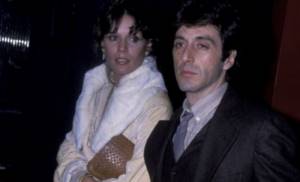
Al Pacino and Martha Keller
In 1989, Al Pacino had a daughter, Julia Maria, with acting teacher Jen Tarrant.
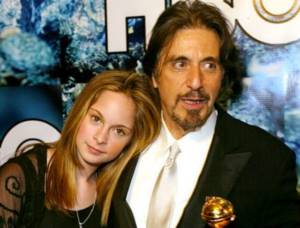
Al Pacino's eldest daughter
In 1996, Al Pacino was in a close relationship with "Vacation" star Beverly D'Angelo, who gave birth to twins Anton James and Olivia Rose in 2001. Despite having common children, the actors stopped communicating in 2003.
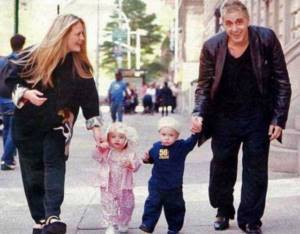
Al Pacino and Beverly D'Angelo with children
Al Pacino has repeatedly stated that fatherhood is the best thing that happened in his life. He always designed his work schedule in such a way as to spend as much time as possible with his children.
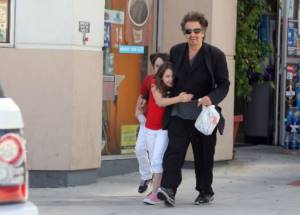
Al Pacino and his children, twins Anton and Olivia
Even in his old age, Al Pacino continued to maintain the image of a handsome womanizer. So, in 2013, he shocked fans with an affair with 33-year-old Latin American model Lucy Sola.
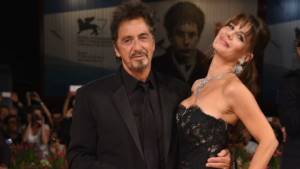
Al Pacino and Lucy Sola
Al Pacino. Curriculum Vitae
Pacino entered the studio of Herbert Berghof, and then continued to study acting at the famous school headed by the American actor and director Lee Strasberg, an adherent of the Stanislavski system.
Having started his acting career in coffee shops, where he and a friend acted out comic skits and passed a hat around for a fee, Pacino soon performed on a variety of theatrical stages in New York.
In 1966, he was noticed by critics, and two years later, in 1968, he received an Obie Award (awarded for off-Broadway productions) for his role as a crazed alcoholic in the play A Bronx for an Indian, and in 1969, an Obie Award. Tony" (the theatrical equivalent of an Oscar) for the role of a drug addict in the play "Do Tigers Wear Ties? ", staged on Broadway. Such success could not go unnoticed by Hollywood, and Pacino was invited to the movies.
The first role in the film “I, Natalie” (1969) was successful: the actor convincingly embodied on the screen the image of a person not adapted to the cruelty of the world around him. Even then, critics noted his extraordinary gift for transformation. In the film Panic in Needle Park (1971), which was extremely popular among young people, Pacino again played the role of a drug addict, an unfortunate and weak-willed anti-hero. The film was recognized as the best among a number of films about drug addiction in the early 1970s, and Pacino's performance was called “amazing.”
Pacino became world famous thanks to Francis Coppola's film The Godfather (1972), in which the actor managed to reveal the mechanism of destruction of the personality of a man who became the head of a mafia clan. Pacino’s hero is Michael, the youngest son of the head of one of the New York mafia clans, Vito Corleone (Marlon Brando), the heir to his “business.”
Michael, a man with a university education, a kind-hearted, kind, truthful young man, at the end of the picture destroys all his opponents and becomes the “godfather” - the head of the clan.
After the film's release, critics noted that the natural restraint of Michael - Al Pacino in key scenes could be replaced by violent outbursts of temperament, which gave the role a sharpness and unpredictability. Pacino brought to the screen a sharpness of plasticity that was new for the characters and an unusual system of behavior.
The film brought the actor not only great fame, but also his first Oscar nomination.
Over the following years, he played many of his best roles, receiving Oscar nominations for Serpico (1973), The Godfather Part II (1974), and Dog Day Afternoon (1975).
In 1977, the film “Bobby Deerfield” (in Russian distribution - “Life on Borrow”) was released, which, according to critics, was not very successful. However, in the same year, Al Pacino's stage work in David Rabe's play Pablo Hummel's Basic Training was about.
1980s brought Al Pacino a streak of bad luck. His theatrical work in “Richard III” was unkindly received by critics, as were his roles in the films “Cruise” (1980, in Russian distribution - “The Wanted”), “Author! The author! (1982); "Scarface" (1983).
After the failure of the 1985 film Revolution, Pacino plunged into depression. He left cinema for four years and only occasionally performed in the theater.
He returned to cinema in 1989. In the film Sea of Love (1989), Al Pacino played the role of a street cop experiencing a midlife crisis.
In 1990, the film “Dick Tracy” was released, which brought the actor another Oscar nomination. In the same year, the third part of The Godfather (1990) was released, in which Pacino brought the image of Michael Corleone he created to its logical conclusion.
In the 1990s. Al Pacino starred a lot and successfully. Critical recognition was brought to him by the films “Frankie and Johnny” (1991) and “Glengarry Glen Ross” (1992; in Russian distribution - “The Americans”). For his role in The Americans, the actor was once again nominated for an Oscar. Al Pacino was awarded this prestigious award in the same year for his excellent performance in the film Scent of a Woman (1992).
In subsequent years, several strong and significant films with Pacino’s participation were released: “Carlito’s Way” (1993); “Heat” (1995) is a film in which two world-class actors came together - Pacino as a cunning detective and Robert De Niro as a professional robber armed with advanced technology; "City Hall" (1996), a high-energy story of behind-the-scenes political games starring Pacino as the conscientious and honest mayor of a big city.
Al Pacino works a lot in cinema and theater. His unique creative path was awarded the American Cinematheque Gala Tribute Award for Career Achievement (2005), and in 2007 he was awarded a similar award by the American Film Institute.
The actor’s filmography consists of more than forty films, among the latest works: “88 Minutes” (2007), “Ocean’s 13” (2007), “Right to Kill” (2008), “You Don’t Know Jack” (2010).
Pacino also tried himself as a director, directing three films: “The Local Stigmatist” (1989), “Finding Richard” (1996) and “Chinese Coffee” (2000).
Al Pacino was never married, but he had many affairs. In 1989, acting teacher Jen Tarrant gave birth to his daughter, Julia Marie Pacino. In January 2001, Pacino and his girlfriend Beverly D'Angelo gave birth to twins - a boy and a girl. The parents named their son Anton, and their daughter Olivia.
Al Pacino now
Among the latest successful films starring Al Pacino are the touchingly sad films “A Second Chance” and “Manglehorn,” which were released in 2014.
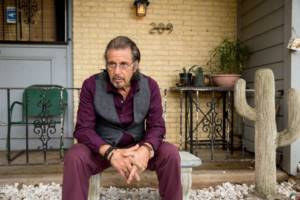
Al Pacino in the movie Manglehorn
In 2021, the premiere of the thriller “Worse Than a Lie” by Japanese director Shintaro Shimosawa took place, starring Anthony Hopkins and Josh Duhamel.
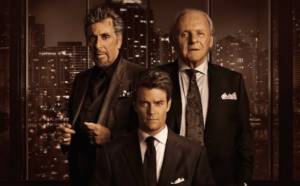
Hollywood's Old Guard: Al Pacino and Anthony Hopkins
In 2021, Quentin Tarantino's thriller Once Upon a Time in Hollywood is expected to be released, which brought together stars such as Leonardo DiCaprio, Brad Pitt and Margot Robbie on the set. Al Pacino played a supporting role. In addition, the premiere of Martin Scorsese’s “The Irishman” is planned for the same year, where the actor is already assigned one of the main roles along with Robert De Niro.
